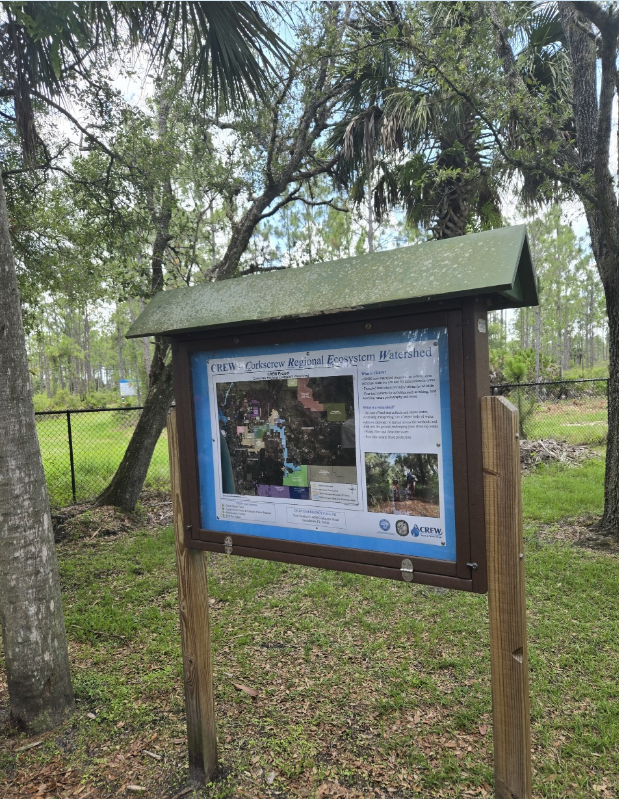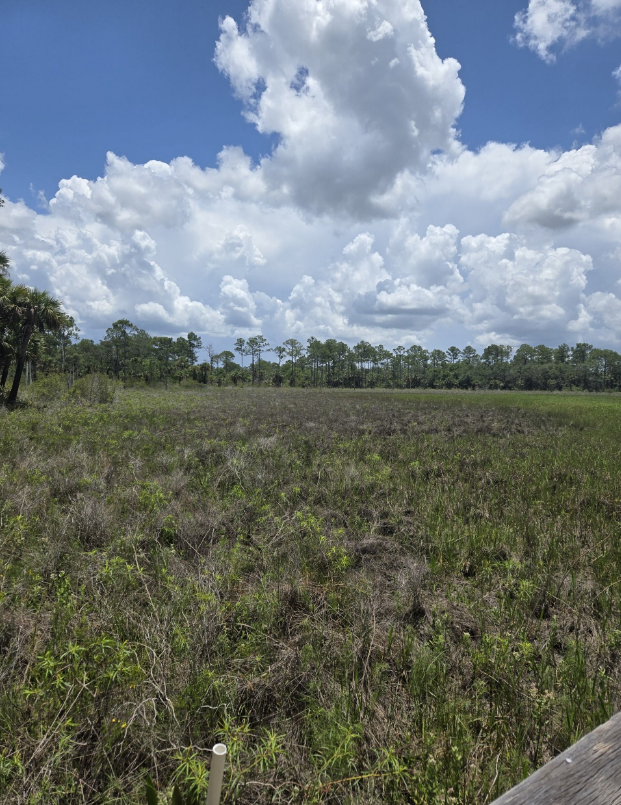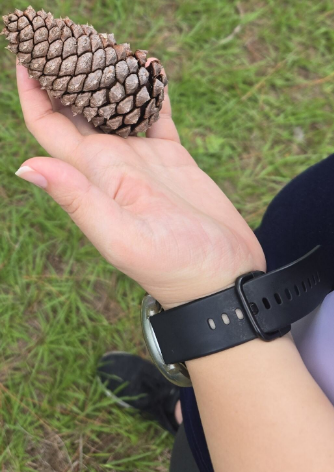Journal 3 - CREW
Pine Flatwoods
Our first stop introduced us to the pine flatwoods, which are predominantly made up of needle-leafed slash pines. They earned the name slash pines due to the fact that early settlers used to slash the pines and collect their sap for its various uses. It also happens to be the habitat with the highest elevation and driest soil found at CREW.
Seasonal Pond
Our second stop introduced us to a seasonal pond which typically only has water during the summer/fall rainy season or the wet season. This area was interesting due to the fact that it had plants more accustomed to wetlands growing toward the center more wetter areas and slash pines or plants accustomed to drier areas growing along the outskirts.
Fire
Our second stop took place in the pine flatwoods and it was at this stop that we were informed about the usage of fires. Due to the fact that the lands at CREW are managed by people, the fires that take place there are controlled in order to simulate the fires that may have occurred naturally prior to human intervention. Fire serves the purpose of breaking down biomass in the area to provide the soil with more nutrients, it also enables pine cones to open up and spread their seeds enabling more slash pines to grow within the pine flatwoods. The pdf on Canvas titled CREW Field Trip Objectives states, "These periodic fires reduce the buildup of underbrush that could provide fuel for an uncontrollable wildfire". This is just another purpose of the controlled fires that take place here.
Animals
During our fourth stop which took place within the pine flatwoods we learned about the animals in the area such as the gopher tortoise, an endangered species which calls this habitat home and often digs burrows in the soil in the area.
Ecotone
Our fifth stop took us through an ecotone, which served as the transitional area between the pine flatwoods and wetter biomes. An interesting thing about this area is that it has the mouse variety of organisms of any area within the CREW lands as it enables plants accustomed to various environments to thrive here enabling genetic variation.
Corkscrew Marsh
Our sixth stop introduced us to the corkscrew marsh which holds water that is vital to the various ecosystems in the area. It provides water for plants, wildlife, and even people. The pdf on Canvas titled CREW Field Trip Objectives states, "Storage in the natural areas of the watershed protects downstream areas such as Bonita Springs and Naples from flooding". This is another reason why this ecosystem's ability to hold water is so important.
Aquifer
During our seventh stop we were informed of the natural aquifer in the area and how the various plants in the area act as a natural filtration system for the aquifer so as water passes through the various root systems of the aforementioned plants, they ensure only clean water is deposited into the aquifer below. The pdf on Canvas titled CREW Field Trip Objectives states, "As the water collects in CREW’s wetlands and flows slowly south, the contaminants are removed by the plants that grow in the wetlands and incorporated into their tissues, resulting in cleaner water leaving the watershed than what came into it." This makes it clear that the natural filtration system here plays a very important role.
resulting in cleaner water leaving the watershed than what came into it.The Use of the Water
Our eighth stop informed us of the uses of the water within the marsh and some of the various organisms that rely on the water from this region such as the herons, alligators, and dragonflies. Many organisms rely on this water to survive.
Wildflowers
Our ninth stop introduced us to some of the various plants that call this area home, and we mainly saw wildflowers such as the Florida State Wildflower, the Leavenworth's Tickseed.
Boardwalk
Our tenth stop took us to a boardwalk that formerly acted as a dock for various boats when there was more water present. Now it is home to a lot of wildlife, such as the cattails in the picture below.
Pavillion
Our tenth and final stop was the pavilion where we discussed Sustainable Development Goals, or SDGs that were relevant to the trip. My group decided on goals 4, 6, and 11. Mostly due to the fact that the entire trip served the purpose of educating us, we learned about the natural water filtration system, and the goal of CREW is to teach others how to live alongside nature.











Comments
Post a Comment